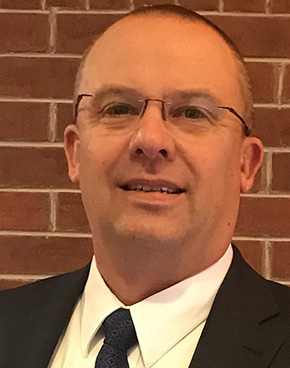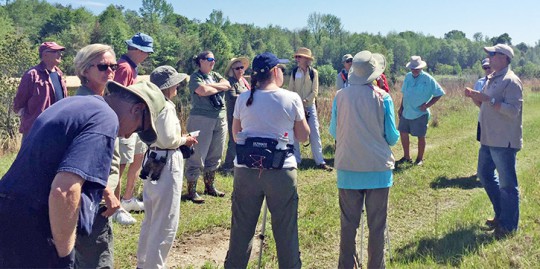Dorothy Kite
April 10, 2017
Dorothy Kite, age 74, passed away April 5, 2017. Dorothy was born in Brewton, AL, on January 31, 1943, to the late William Cleve and Lucille Chavers. She was a proud member of New Beginnings Holiness Church, an avid homemaker and was known as a loving but firm mother to her children.
Dorothy is preceded in death by her parents and her loving husband of 43 years, L.D. Kite, Sr.
She is survived by her children, Leavon (Lisa) Sessions of Mobile, AL, Angela (Mardic) Eddins of Century, FL, Annette (David) Mosley of Luling, LA, David Kite, Jr. of Luling, LA, Jonathan (Christi) Kite of Walnut Hill, FL and Steven Kite of Century, FL; sisters, Barbara Bonds of Raines, AL., Judy (James) Dunsford of Grand Bay, MS and Cindy (Charles) Grant of Milton, FL; brother, Darrell “Bull” Chavers of Milton, FL: 15 grandchildren; 17 great-grandchildren and one on the way.
The family will receive friends for visitation Saturday, April 8, 2017, 1:00 p.m. – 2:00 p.m. with
Funeral services were held on Saturday, April 8, 2017, at Faith Chapel North. Bro. Travis Evans served as officiant.
Pallbearers were Markus Eddins, David Kite, Dillon Kite, Trent Kite, Tyler Kite, and Pat Kite.
Honarary pallbearers were Mickey Kite, Bubba Kite and Kris Eddins.
Interment was at Highland Baptist Cemetery.
Faith Chapel Funeral Home North is entrusted with arrangements.
$3 Million Highway 97A Bridge Replacement Underway
April 9, 2017
The $3 million bridge replacement project on County Road 97A over Boggy Creek near Enon in Escambia County is underway. Traffic has been moved to a temporary bridge while crews construct a new, modern bridge encompassing 12-foot travel lanes, eight foot shoulders and a solid concrete barrier railing. The bridge approaches will also be replaced. Work is anticipated to be complete in the fall of 2017, weather permitting. The bridge to be replaced was constructed in 1969. Photos for NorthEscambia.com, click to enlarge.
The Creek The Changed Course: Nature Class Learns About The Big Escambia
April 9, 2017
A Florida Master Naturalist conservation class learned about the Big Escambia Creek restoration project near Century last week. The class was presented by a U.S. Fish and Wildlife Service biologist. The class is an adult education program created by the University of Florida/IFAS intended to promote awareness and understanding of Florida’s unique environment.
Big Escambia Creek is a major tributary of the Escambia River located approximately 29 miles north of Escambia Bay. Over 30 years ago conditions along the lower reaches of the creek changed when a sand mining operation digging too close to the creek combined with an intensive rainfall event caused the creek to change its course and follow the path of least resistance through the sandpits. Since the creek changed its course, the estimated 900 acres of wetlands in and around the old creek channel now had no base flow and were reverting to an upland type habitat. In addition, tons of sediment began to flow downstream into the Pensacola Bay System.
A $7.7 million project was implemented to eliminate the delivery of the sediment and to restore the productivity of the floodplain by diverting the creek back into its original channel. Construction on the project began in 2003 and was completed in 2005.
Courtesy photo for NorthEscambia.com, click to enlarge.
Escambia County Public Meetings This Week
April 9, 2017
Here is the schedule of public meetings for Escambia County this week:
Monday, April 10
Technical Coordinating Committee, 4081 E. Olive Road, Suite A, 8:30 a.m.
Citizen’s Advisory Committee, 4081 E. Olive Road, Suite A, 10:30 a.m.
Marine Advisory Committee Meeting, 3363 West Park Place, Room 104, 5:30 p.m.
Tuesday, April 11
Mass Transit Advisory Committee Workshop, 3363 West Park Place, Room 112, 8:30 a.m.
Environmental Enforcement Special Magistrate, 3363 West Park Place, 1:30 p.m.
Escambia County Housing Finance Authority Public Hearing, 700 S. Palafox St., Suite 310, 4:30 p.m.
Escambia County Housing Finance Authority Meeting, 700 S. Palafox St., Suite 310, 5 p.m.
Affordable Housing Advisory Committee, 420 W. Chase St., 5:30 p.m.
District 3 Town Hall Meeting, 3363 West Park Place, 5:30 p.m.
Wednesday, April 12
Transportation Planning Organization, 3363 West Park Place, 9 a.m.
Development Review Committee, 3363 West Park Place, 1 p.m.
Santa Rosa Island Authority Board Meeting, 1 Via de Luna, Pensacola Beach, 5 p.m.
Thursday, April 13
Attorney/Client Session – Brumley v. Escambia County, Ernie Lee Magaha Government Building, 221 Palafox Place, 8:30 a.m.
Board of County Commissioners Committee of the Whole, Ernie Lee Magaha Government Building, 221 Palafox Place, 9 a.m.
Wellness Committee Meeting, 4th Floor Training Room, Ernie Lee Magaha Government Building, 221 Palafox Place, 2:30 p.m.
Benefits Committee Meeting, 4th Floor Training Room, Ernie Lee Magaha Government Building, 221 Palafox Place, 3:30 p.m.
Friday, April 14
County Offices Closed – Good Friday
Super Spring Weather Continues
April 9, 2017
Here is your official North Escambia area forecast:
Sunday: Sunny, with a high near 78. Light and variable wind becoming south 10 to 15 mph in the morning.
Sunday Night: Clear, with a low around 52. South wind 5 to 10 mph becoming east after midnight.
Monday: Sunny, with a high near 82. East wind 5 to 15 mph becoming south in the afternoon.
Monday Night: Mostly clear, with a low around 57. South wind around 5 mph becoming calm in the evening.
Tuesday: Mostly sunny, with a high near 83. East wind around 5 mph becoming south in the afternoon.
Tuesday Night: Partly cloudy, with a low around 58. South wind around 5 mph becoming calm in the evening.
Wednesday: Mostly sunny, with a high near 83. North wind around 5 mph becoming southeast in the afternoon.
Wednesday Night: Partly cloudy, with a low around 58. Southwest wind around 5 mph becoming calm.
Thursday: Sunny, with a high near 85.
Thursday Night: Mostly clear, with a low around 58.
Friday: Sunny, with a high near 84.
Friday Night: Partly cloudy, with a low around 59.
Saturday: Mostly sunny, with a high near 84.
Low Income Students Could Get More Aid
April 9, 2017
Although state college leaders are unhappy with a Senate budget that would boost university funding but slash support for the colleges, they are pleased with a Senate effort to expand aid for students who come from lower-income families.
The budget plan (SB 2500), which the Senate will take up Wednesday, would increase the state’s largest need-based aid program, known as Florida student assistance grants, by 81 percent, or $121 million, in the academic year that begins July 1. Senators also want to double the state’s matching grants for “first generation” college and university students to a total of $10.6 million.
 The increase in need-based aid, which would also help the university system, is important to the 28 state colleges because their students will not benefit much from the Senate’s plan to expand the Bright Futures merit-scholarship program. The Senate budget would cover full tuition and fees for the top Bright Futures students, known as “academic scholars,” as well as provide $300 for textbooks for two semesters and cover summer tuition.
The increase in need-based aid, which would also help the university system, is important to the 28 state colleges because their students will not benefit much from the Senate’s plan to expand the Bright Futures merit-scholarship program. The Senate budget would cover full tuition and fees for the top Bright Futures students, known as “academic scholars,” as well as provide $300 for textbooks for two semesters and cover summer tuition.
But out of 46,000 Bright Futures academic scholars projected in the next academic year, only 5 percent of them will be enrolled at a state college.
In contrast, state college students represented 70 percent of the 105,000 students in a public college or university who received a need-based Florida student assistance grant in the 2015-16 academic year, according to the state Department of Education.
Systemwide, state college students received an average grant of $903, ranging from $1,651 at Chipola College to $499 at Broward College. Broward had the most students receiving grants, with 17,000, followed by Miami Dade College with 16,700.
The Senate budget would expand Florida student assistance grants for public universities and colleges from the current year $114.6 million to $208 million. The grants also go for private universities and other post-secondary programs.
“We’re all over the Senate right now because we’re concerned,” said David Armstrong, president of Broward College, referring to the Senate’s proposed budget cuts, including a $55 million reduction in remedial education funding for the colleges.
But it’s a different story with the Senate’s plan to expand need-based aid.
“We have been neglecting the need-based (programs),” said Armstrong, who oversees the second-largest state college in the system, with some 66,000 students. “Kudos to the Senate. I applaud them for addressing the need-based issues.”
The Senate and House are expected next week to approve their budget bills, setting the stage for negotiations on a final spending plan for the fiscal year that starts July 1.
The House budget plan (HB 5001) would lead to a 5 percent increase in the overall Florida student assistance grants program.
State colleges would also benefit from the expansion of another needs-based aid program in the Senate budget, which would double the state match for students who qualify as “first generation” college or university students. The Senate bill would double the state funding to $10.6 million, meaning for every dollar a college or university raises for the program, it wouldl be matched by $2 from the state.
State colleges should receive about $2.65 million in matching funds from the program, reflecting about quarter of the funds, a proportion that is consistent with what they received in the 2015-16 academic year.
The House budget does not expand the first-generation matching program, nor does it provide any expansion of the Bright Futures merit scholarships.
Ava Parker, president of Palm Beach State College, said less than 2 percent of the 46,000 students on her campus have Bright Futures scholarships and she appreciates the Senate’s effort to boost need-based aid programs.
“The Senate has a real appreciation for (the fact) that we have students who have economic challenges and they’re trying to find ways to assist with that,” Parker said. “I think the Senate is really focused on what things can we do to ensure that folks graduate faster and they understand that the college system is a piece of that puzzle.”
Having said that, though, Parker said she remains concerned about what the college leaders perceive as an imbalance in the Senate higher-education budget that would increase university funding while cutting state colleges. She said the cuts would make it harder for colleges to achieve the Legislature’s goal of graduating more students on time.
“It’s a greater understanding that if you don’t help us also participate in that (funding) equation (with the universities), it’s going to be more difficult for you to reach that goal,” Parker said.
Also, a gap remains for students who rely on need-based aid to attend state colleges or universities. Neither the Florida student assistance grant program nor the first-generation grants can be used during the summer semester.
It is further complicated by the fact that lower-income students tend to rely on a combination of scholarships and grants to pay for their educations. One of the key financial supports is the federal Pell grant program, which since 2011 also has not covered the summer semester.
Over the last year, there has been debate in Congress about making Pell grants available year-round, but that has not become a reality.
Another challenge for financial aid looms in the House, where leaders have raised objections to colleges and universities using public employees in their private foundations, which raise money for the schools.
Armstrong, Parker and other college presidents said limitations on the foundations could hurt their ability to raise money, which at the colleges is primarily used to fund scholarships.
Escambia County Names New Human Resources Director
April 9, 2017
The Escambia County Board of County Commissioners welcomes Eric Kleinert as the new Director of Human Resources, joining Escambia County from Carmel, Indiana, where he most recently served as the human resources director for the Indiana Department of Transportation. Kleinert’s responsibilities with Escambia County will include supervising the Human Resources Department, mentoring and evaluating staff, advising the county administrator on the needs of the department and representing the department before the board of county commissioners. Kleinert’s first day with Escambia County was Friday.
 Kleinert graduated from Indiana Wesleyan University with a Master’s Degree in human resources management and from Indiana University with a Bachelor’s Degree in political science. With 20 years of experience in the field of human resources, Kleinert has also earned his Senior Professional in Human Resources certificate from the HR Certification Institute and Senior Certified Professional certificate from the Society for Human Resources Management.
Kleinert graduated from Indiana Wesleyan University with a Master’s Degree in human resources management and from Indiana University with a Bachelor’s Degree in political science. With 20 years of experience in the field of human resources, Kleinert has also earned his Senior Professional in Human Resources certificate from the HR Certification Institute and Senior Certified Professional certificate from the Society for Human Resources Management.
As the director of human resources for the Indiana Department of Transportation, Kleinert served more than 3,500 employees, directing a human resources team working in affirmative action, benefits, disability, employee relations, leave administration, recruiting and workers’ compensation. Prior to his position at IDOT, Kleinert was the human resources director for the Indiana Bureau of Motor Vehicles from January 2014 to June 2015, serving approximately 1,750 employees. Kleinert has also served as the human resources director for the Indiana Department of Natural Resources and the regional human resources director for the Indiana Department of Corrections.
Kleinert grew up in Mishawaka, Indiana, and became interested in human resources while working at a temp agency shortly after graduating college. Kleinert said he was drawn to the way human resources could impact and support an organization, and he soon entered the field through an entry-level HR position.
The prospect of becoming Escambia County’s human resources director interested Kleinert not only because of the county’s mission and values, but also because of the area’s attractive lifestyle. Kleinert’s wife, Melanie, and two daughters, Gabi and Madi, will be relocating along with him.
“I think it’s a combination of the opportunity to continue in public service as well as the quality of life in the county,” Kleinert said. “We’ve visited the county several times over the past 15 years, and it’s an area we targeted as a place we’d like to relocate to.”
In his new position as the county’s human resources director, Kleinert said he plans to take time to analyze any HR-related issues in Escambia County and develop relevant, timely and sustainable solutions as needed, operating under what he calls a “coaching” management style.
“It’s adaptable based on the employee,” Kleinert said. “I will push employees in certain situations and challenge them to grow. In others, it will be hands-on, especially as they’re new to processes, and try to grow them in a more applied manner.”
Kleinert said he’s looking forward to continuing the county’s human resources mission while supporting the mission and vision of the board of county commissioners.
“It’s something that I can relate to,” Kleinert said. “The fiscal responsibility, the commitment to customer service – in my current organization, those are some of our core values, as well.”
Wahoos Drop Second In A Row
April 9, 2017
The Pensacola Blue Wahoos took a short-lived, 2-1, lead in the first inning of Saturday’s game when Devin Mesoraco blasted his first homer in two seasons out of Blue Wahoos Stadium into Pensacola Bay.
However, the Tennessee Smokies regained the lead in the second inning and Smokies pitcher Trevor Clifton set down the next 13 Pensacola batters he faced, as Tennessee went on to a 9-2 victory in front of the third straight sellout crowd of 5,038.
The two-run shot by Mesoraco also scored Pensacola shortstop Blake Trahan, who had walked. It was Mesoraco’s first home run since Sept. 23, 2014 against the Milwaukee Brewers. Mesoraco, an All-Star catcher with the Reds in 2014, is playing in Pensacola as part of his rehabilitation from two hip surgeries and a shoulder surgery that limited him to play just 39 games with the Cincinnati Reds in 2015 and 2016.
Pensacola manager Pat Kelly pointed to his bulletin board where he pinned the schedule for Mesoraco’s playing time. By the middle of next week, the Reds’ want him to play in back-to-back 9-inning games. He played six innings in the Blue Wahoos’ season opener, sat out the second game, and was pulled after 7 innings Saturday.
“They don’t let me make those decisions,” Kelly said, chuckling.
Mesoraco impressed him with his long ball in the first inning.
“He hit that ball good,” Kelly said. “We talked earlier in the day at batting practice and he’s still not feeling comfortable yet. But he jumped all over that 3-1 fastball. He’s knocking that rust off.”
The Blue Wahoos stayed within two runs of Tennessee until the sixth inning when the Smokies sent nine batters to the plate and broke out with five runs.
The big hit in the inning came from Tennessee first baseman Yasiel Balaguert who with two outs and the bases loaded hit a sizzling ground ball past the shortstop into centerfield that made a close 4-2 game, 6-2, as both pinch hitter Ian Rice and left fielder Charcer Burks scored. Balaguert was 2-4 with a double, a run scored and two RBIs.
“Offensively, this lineup is going to hit,” Kelly said. “It just takes time. We got some power. We’re going to hits some home runs.”
Kelly expects one of the Blue Wahoos’ power hitters, Aristides Aquino, who hit 23 homers last year to get on track. Aquino is 0-11 after getting a hit in his first at bat Thursday that drove in a run.
“He’s going to show us why he’s so highly rated,” Kelly said confidently of Aquino, the sixth ranked Red’s prospect according to MLB Pipeline.
Tennessee scored in the first inning to go up 1-0, when Burks started the game with a double. He then scored when second baseman Davis Bote hit a sharp grounder down the right field line.
After Mesoraco’s two-run bomb, the Smokies came back with two more runs in the second inning when catcher Cael Brockmeyer doubled and scored on a triple by shortstop Andrew Ely, who smacked a line drive into the left center gap to tie the game 2-2. Ely then scored when Tennessee righty Clifton singled up the middle to give Tennessee a 3-2 lead.
Making his Double-A debut Clifton, who MLB Pipeline ranks the seventh best prospect in the Cubs organization, retired the next 13 Blue Wahoos hitters until first baseman Angelo Gumbs smacked a line drive single to right center in the fifth inning. Clifton was named High-A Carolina League Pitcher of the Year after going 7-7 with a 2.72 ERA for the Myrtle Beach Pelicans and holding hitters to a .225 average.
He finished the game allowing just two hits and two runs in five innings, while walking one and striking out four.
“In that first inning, we needed to take advantage of him,” Kelly said. “He started getting his breaking ball over and seemed to settle in.”
Pensacola right-hander Keury Mella also made his Double-A debut Saturday. The 23-year-old Mella, who is the No. 19 ranked prospect by both Baseball America and MLB Pipeline, also lasted five innings, giving up three runs on seven hits, walking two and striking out four. After giving up three runs in the first two innings, Mella threw better, blanking the Smokies and limiting them to two hits, one walk and striking out two over the next three innings.
“Those last three innings, I thought he threw fairly well,” Kelly said.
Hunter Safety Courses Offered In Molino, Cantonment
April 9, 2017
The Florida Fish and Wildlife Conservation Commission (FWC) is offering free hunter safety courses in Escambia County. (List follows.)
 Students who have taken the online course and wish to complete the classroom portion must bring the online-completion report with them. Traditional course students must complete the entire course in person.
Students who have taken the online course and wish to complete the classroom portion must bring the online-completion report with them. Traditional course students must complete the entire course in person.
All firearms, ammunition and materials are provided free of charge. Students should bring a pen or pencil and paper. An adult must accompany children younger than 16 at all times.
Anyone born on or after June 1, 1975, must pass an approved hunter safety course and have a hunting license to hunt alone (unsupervised). The FWC course satisfies hunter-safety training requirements for all other states and Canadian provinces.
The locations and times are:
Online-completion Courses
April 19 (6 to 10 p.m. CDT) and May 6 (7 to 10 a.m. CDT)
Molino Community Center
6450 Highway 95A in Molino
April 24 (6 to 10 p.m. CDT) and May 6 (7 to 10 a.m. CDT)
Langley Bell 4-H Club Center
3730 Stefani Road in Cantonment
Traditional Course (must complete all days)
April 24, 26 & May 1, 3 (6 to 10 p.m. CDT) and May 6 (7 to 10 a.m. CDT)
Langley Bell 4-H Club Center
3730 Stefani Road in Cantonment
Those interested in attending a course can register online and obtain information about future hunter safety classes at MyFWC.com/HunterSafety or by calling the FWC’s regional office in Panama City at 850-265-3676.
Florida Gov’t Weekly Roundup: All About The Benjamins
April 9, 2017
In real estate, it’s “location, location, location.” In the legislative session, it’s “budget, budget, budget.”
And the all-important budget process — the one thing lawmakers are constitutionally required to complete every year — started moving from the outline phase to the endgame this week. The House and Senate will officially approve their spending plans next week, but little is likely to change between now and then.
 Including, apparently, the attitudes of those responsible for hammering out a compromise allowing everyone to go home. Senate President Joe Negron, R-Stuart, and House Speaker Richard Corcoran, R-Land O’ Lakes, were among the leaders already laying out what they considered to be non-starters in the negotiations. Turns out, the budget is full of non-starters.
Including, apparently, the attitudes of those responsible for hammering out a compromise allowing everyone to go home. Senate President Joe Negron, R-Stuart, and House Speaker Richard Corcoran, R-Land O’ Lakes, were among the leaders already laying out what they considered to be non-starters in the negotiations. Turns out, the budget is full of non-starters.
“It’s $4 billion, so there’s plenty of starting points,” said House Appropriations Chairman Carlos Trujillo, R-Miami, of the differences between the budgets. “We just have to pick the right one.”
Finding it and following through will be the story that shapes the rest of the regular session.
WHAT’S $4 BILLION AMONG FRIENDS?
The $4 billion amount is a bit inflated, as it includes things like federal payments to hospitals that might not materialize. The Senate has roughly $600 million in the spending plan for that, and the House doesn’t; whether the money appears will go a long way to resolving that.
But $4 billion is closer to reality than a bottom-line look at the chambers’ budget proposals. The House plan (HB 5001) is $81.2 billion, while the Senate proposal (SB 2500) is officially $83.2 billion. However, the Senate doesn’t include nearly $2 billion in university tuition that does show up in the House proposal.
Accounting sleights of hand were not the main topics of discussion as the House and Senate budget-writing committees met this week to discuss their competing proposals. Each side received an overwhelming vote in favor of its plan. The Senate Appropriations Committee signed off unanimously, while the generally more partisan House Appropriations Committee approved its blueprint by a 24-2 margin.
Not that there wasn’t some controversy. Senators were trying to figure out what to do about a proposed $1.3 million cut — currently in both budgets — to the office of State Attorney Aramis Ayala, elected last year as the top prosecutor in Orange and Osceola counties.
Ayala recently announced she would not pursue the death penalty in capital punishment cases, drawing criticism from state Republican leaders and prompting Scott to shift 22 cases away from her office.
“State Attorney Ayala’s complete refusal to consider capital punishment for the entirety of her term sends an unacceptable message that she is not interested in considering every available option in the fight for justice,” Scott said Monday, as he removed Ayala from 21 of the cases.
Lawmakers say the budget cut would account for the fact that Ayala’s office wouldn’t be handling those cases.
But Kamilah Perry, Ayala’s chief of staff, told the Senate committee that her office is covering many of the costs of the transferred cases. And she said the cut would actually affect efforts to combat human trafficking.
“Less than 1 percent of all of our cases are death penalty, so the caseload is not going to be (reduced) that much,” Perry said.
An amendment that would have restored the money — proposed by Criminal Justice Chairman Randolph Bracy, D-Orlando — was withdrawn after Senate Appropriations Chairman Jack Latvala, R-Clearwater, promised to look for a compromise.
“I think one thing that’s clear is, none of us really know exactly how these costs are going to break down, and how we can correctly apportion them. … I don’t want to be responsible for lessening our enforcement in human trafficking,” Latvala said.
But Latvala conceded after the meeting that he didn’t know exactly what that compromise might include.
Meanwhile, Democrats in the House were trying to decide whether or not to vote strategically. All of them had misgivings about the plan, but Rep. Jared Moskowitz, the ranking Democrat on the committee, suggested his vote was about keeping leverage in a potential standoff between Gov. Rick Scott and the Legislature.
“I would also remind my Democratic colleagues and my Republican colleagues that, should what we’ve been reading about for the last couple of months happen, where the governor decides to send our budget back with a veto, the override of the veto runs through the Democratic caucus in the House,” said Moskowitz, D-Coral Springs.
Spring often brings to Tallahassee as much talk of Scott vetoing the budget as it does pollen in the air, and so far there’s been no such standoff.
WATER, WATER EVERYWHERE
One potential stumbling block got a little smaller — even if it didn’t go completely away — when the Senate Appropriations Committee approved a scaled-back version of Negron’s plan to create a water storage project south of Lake Okeechobee.
The $1.5 billion measure (SB 10), which relies on federal money to cover half the costs, is designed to reduce polluted water discharges from Lake Okeechobee that have been tied to toxic algae in the St. Lucie and Caloosahatchee estuaries east and west of the lake.
Negron, who has made the issue one of his top priorities, agreed to reconfigure the proposal after the House and some area residents balked at a $2.4 billion version that targeted farmland south of the lake for a reservoir.
Acquiring farmland remains on the table, but the plan now first would use a smaller amount of state-owned land to construct a deeper storage area.
“We’re not done yet, but this is his vision,” bill sponsor Rob Bradley, R-Fleming Island, said of Negron. “He’s put it all on the line, and the political courage he has shown is something we can all emulate.”
The proposal has faced strong criticism from Glades-area residents, politicians and landowners since being proposed last year. Opponents have included powerful players in the sugar industry.
That doesn’t mean that the House is now copacetic to the plan, even if Corcoran sounded positive about the changes so far.
“The more the Senate works on it, the happier we are,” he told reporters Thursday.
A key philosophical difference remains: whether to increase state debt through bonding voter-approved money. The House has resisted that idea throughout the talks over Negron’s bill.
“We’re not bonding. Bonding is an issue,” Corcoran said. “I didn’t say we’re going to go along with it. I said it’s getting better and better.”
The same day, Negron insisted that the project needs to include bonding to bulk up funding for the work.
“I think we need to have bonding authority in Senate Bill 10 to accomplish the goals in a short period of time,” Negron said. “And I think that issue of bonding for environmental purposes, I think that’s a settled question by the voters.”
The bill proposes $64 million for the water-storage project next fiscal year, delaying for a year plans to increase the state’s share through bonding.
Money for Negron’s water project would come from the state’s Land Acquisition Trust Fund, funded through a portion of an existing real-estate tax. Voters in 2014 approved setting aside money from the fund for land and water conservation.
“We’re all entitled to our points of view on bonding, but when the voters speak and send us a directive to do bonding for environmental land purchases, I think we’re obligated to honor that constitutional imperative,” Negron said.
IN OTHER NEWS
Not everything was about the budget — or at least not directly. The House and the Senate remain divided over what to do with a measure to shift to the state the burden of proof in some self-defense hearings.
The proposals would force prosecutors to carry the day in pre-trial hearings involving the state’s controversial “stand your ground” self-defense law. The House wants prosecutors to overcome the self-defense immunity through “clear and convincing evidence.”
The Senate version of the proposal (SB 128) sets a higher standard known as “beyond a reasonable doubt.”
“I’ve said from the beginning, if the government wants to convict you of a serious crime and send you to prison, they should have the burden of proof at every stage of the proceeding beyond and to the exclusion of every reasonable doubt,” Senate President Joe Negron, R-Stuart, told reporters on Thursday. “It’s the highest legal standard in the world. It’s served us well. And in order for the government to prevail in the underlying criminal case they’re going to have to prove beyond and to the exclusion of every reasonable doubt. ”
House sponsor Bobby Payne, R-Palatka, told reporters the clear-and-convincing-evidence threshold was a “reasonable and fair place to land” after hearing from numerous groups regarding how the 2005 law should be interpreted.
“We need to consider the opportunity for encouraging victims to come forward in those particular situations,” Payne replied when asked why he supported the “clear and convincing” language.
Lawmakers were also working on two more symbolic but still weighty measures. One would apologize to victims of decades-old beatings and sexual abuse at the now-shuttered Arthur G. Dozier School for Boys in Marianna, a state reform school that operated from 1900 to 2011.
Another would apologize to and urge the consideration of a pardon for four black men accused of raping a white woman in June 1949. Two of the men were killed by law enforcement, while two more were convicted. Many of those who have studied the case seriously doubt or outright dismiss the men’s guilt.
“This resolution is us simply saying we’re sorry, understanding that we will never know nor be able to make up for the pain we have caused,” said Rep. Bobby DuBose, a Fort Lauderdale Democrat and sponsor of the House version of the proposal (HCR 631).
The Senate Judiciary Committee unanimously approved the Dozier apology; the House Judiciary Committee unanimously approved both measures.
STORY OF THE WEEK: Key budget-writing committees approved both the House and Senate budget plans, setting up the next stage of the critical negotiations aimed at closing out the 2017 legislative session.
QUOTE OF THE WEEK: “”It’s been said that this workers’ compensation issue and the bill that we have before us today in general is an egg on a spoon on a tightrope over a whole bunch of molten lava.” — House Insurance & Banking Chairman Danny Burgess, R-Zephyrhills, who is spearheading the proposal.
by Brandon Larrabee, The News Service of Florida







